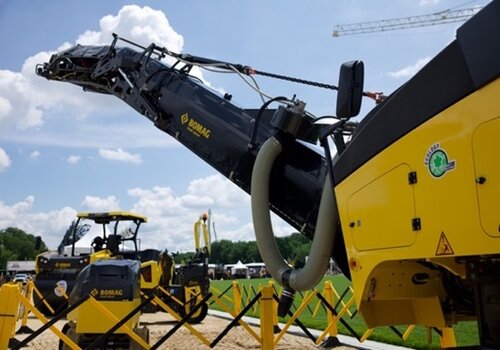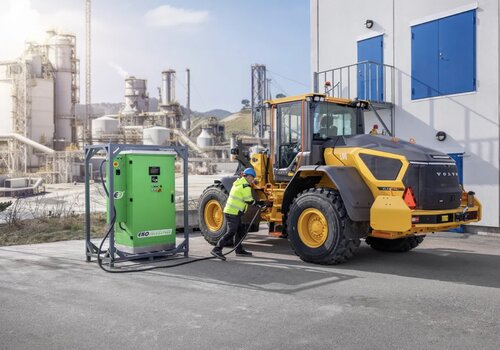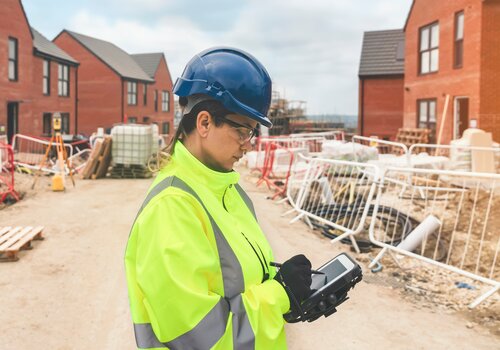Blockchain Technology Promises to Enhance Supply Chain Visibility and Reduce Administrative Costs
If you think blockchain technology is just for Bitcoin bros, think again. By providing an immutable, decentralized ledger that’s difficult to tamper with, blockchain technology can bring greater transparency to supply chains in the construction industry and beyond, enabling stakeholders to track materials and transactions in real time.
WHAT IS BLOCKCHAIN?
Once information is recorded on the blockchain, it can’t be changed or deleted without consensus from other participants within that shared network. That immutability gives companies throughout the supply chain confidence in the integrity of their data. It also provides a reliable audit trail to promote efficient project management and dispute resolution.
WHY SHOULD I USE BLOCKCHAIN?
One of the simplest use cases for blockchain technology in construction is tracking the provenance of products, according to Alan Penn, professor of architectural and urban computing at University College London and a director of the Construction Blockchain Consortium. Penn noted that large construction projects use products from a “global network” of manufacturers, complicating procurement and other processes.
On large projects, blockchain technology provides a single source of truth that all stakeholders can trust. The digital recordkeeping technology can be used to record supplier certifications and compliance records, making it less likely that counterfeit materials enter supply chains.
Sustainability
Data maintained on the blockchain makes it possible for companies to track the greenhouse-gas emissions associated with their projects, to cut down on construction waste and to adhere to green-building practices. Meanwhile, suppliers can point to their immutable data to prove that they’re complying with ethical labor and sourcing practices.
By preventing substandard products from reaching jobsites, construction companies can avoid overpaying for materials, ensure the quality of their work and make jobsites safer for workers and end users.
“Knowing where something has come from and that it’s been manufactured to the standards that are specified has become remarkably difficult for anyone to certify, so I think that’s an area that will see a rapid take-up,” Penn said.
Raw Materials
Blockchain technology can record the origin, quantity and quality of raw materials used in production, so companies can track their compliance with ethical-sourcing requirements. The blockchain also can ensure that only verified suppliers that reliably meet production and sustainability standards can fulfill orders within the shared network.
The technology tracks materials throughout their production stages to ensure compliance with manufacturing standards. Using sensors and the Internet of Things (IoT), companies can monitor the movement of goods and delivery times, helping contractors to optimize their labor and asset allocation. With a clear picture of when products will arrive at jobsites, contractors can stick to schedules, coordinate deliveries and pursue other options when supply chains are disrupted.
In a simple example, the global consulting firm Deloitte worked with a client to develop real-time shipment tracking. Sensors strapped to pallets of materials record the location of every shipment without the need for workers to input that information. With a complete and verifiable picture of their logistical network, the sender, shipper and receiver can quickly identify and address supply-chain bottlenecks and challenges, limiting their impact upon project timelines.
Smart Contracts
Similarly, self-executing smart contracts stored on the blockchain can streamline procurement and payment operations, minimizing financial disputes between parties. Payments to suppliers could be initiated automatically once certain conditions have been satisfied, such as the confirmed delivery of shipments to jobsites, for instance.
If suppliers fail to meet their obligations as outlined in smart contracts, the technology could automatically apply financial penalties, allowing construction companies to hold their suppliers accountable. Since reach transaction is recorded automatically, companies throughout the supply chain can trust the accuracy of procurement, shipping and payment records.
Using blockchain technology, construction companies can track the reliability of suppliers over time, helping them to make wiser sourcing decisions. Since all transactions are immutable, outliers are easily identifiable, reducing the incidence of internal or external fraud.
The blockchain can help suppliers quickly address product deficiencies, preventing flawed construction materials from being used on jobsites. If a supplier discovers that a batch of product was manufactured incorrectly, for example, it can use the blockchain to trace the product, identify all customers that have received it and recall it efficiently.
Using IoT technology, contractors can be alerted when inventories of key materials are running low. Through smart contracts, replenishment can be automated, so contractors can avoid the delays associated with manual procurement processes, and the likelihood of human error is reduced.
With increasingly transparent supply chains, construction companies, shippers and suppliers will have fewer disputes, and when problems do arise, it will be easier to determine the party at fault, according to Penn. The immutable nature of the blockchain makes it easy to find the errors at the heart of disagreements.
“I think blockchain is going to affect the way we work because what it essentially does is shine a light on individual responsibility,” Penn said. “It opens up the ability for somebody to see exactly who took responsibility for what at any stage in a project, and that means that we’ll move from a culture of litigation after the fact in construction to a culture of trying to get it right in the first place and holding one’s hand up when you get it wrong.”
PHOTO CREDIT: NOTICE44/BIGSTOCKPHOTO.COM











